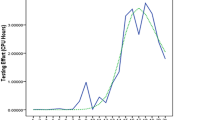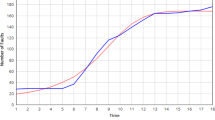Abstract
Since the early 1970s tremendous growth has been seen in the research of software reliability growth modeling. In general, software reliability growth models (SRGMs) are applicable to the late stages of testing in software development and they can provide useful information about how to improve the reliability of software products. A number of SRGMs have been proposed in the literature to represent time-dependent fault identification / removal phenomenon; still new models are being proposed that could fit a greater number of reliability growth curves. Often, it is assumed that detected faults are immediately corrected when mathematical models are developed. This assumption may not be realistic in practice because the time to remove a detected fault depends on the complexity of the fault, the skill and experience of the personnel, the size of the debugging team, the technique, and so on. Thus, the detected fault need not be immediately removed, and it may lag the fault detection process by a delay effect factor. In this paper, we first review how different software reliability growth models have been developed, where fault detection process is dependent not only on the number of residual fault content but also on the testing time, and see how these models can be reinterpreted as the delayed fault detection model by using a delay effect factor. Based on the power function of the testing time concept, we propose four new SRGMs that assume the presence of two types of faults in the software: leading and dependent faults. Leading faults are those that can be removed upon a failure being observed. However, dependent faults are masked by leading faults and can only be removed after the corresponding leading fault has been removed with a debugging time lag. These models have been tested on real software error data to show its goodness of fit, predictive validity and applicability.
Similar content being viewed by others
Explore related subjects
Discover the latest articles, news and stories from top researchers in related subjects.References
J. D. Musa, A. Iannino, K. Okumoto. Software Reliability: Measurement Prediction, Application, McGraw Hill, New York, 1987.
H. Pham. Software reliability, Springer, Sigapore, 2000.
A. L. Goel, K. Okumoto. Time Dependent Error Detection Rate Model for Software Reliability and Other Performance Measures. IEEE Transactions on Reliability, vol. 28, no. 3, pp. 206–211, 1979.
P. K. Kapur, R. B Garg. A Software Reliability Growth Model for an Error Removal Phenomenon. Software Engineering Journal, vol. 7, no. 4, pp. 291–294, 1992.
P. K. Kapur, R. B. Garg, S. Kumar. Contributions to Hardware and Software Reliability, World Scientific, Singapore, 1999.
P. K. Kapur, S. Younes. Software Reliability Growth Model with Error Dependency. Microelectronics and Reliability, vol. 35, no. 2, pp. 273–278, 1995.
P. K. Kapur, A. K. Bardhan, S. Kumar. On Categorization of Errors in a Software. Intrenational Journal of Management and System, vol. 16, no. 1, pp. 37–38, 2000.
S. Yamda, M. Ohba, S. Osaki. S-shaped Reliability Growth Modeling for Software Error Detection. IEEE Transactions on Reliability, vol. 32, no. 5, pp. 475–484, 1983.
P. K. Kapur, V. B. Singh, S. Anand, V. S. S. Yadavalli. Software Reliability Growth Model with Change-point and Effort Control Using a Power Function of Testing Time. International Journal of Production Research, [online], Available: http://www.informaworld.com, November 17, 2006.
P. K. Kapur, V. S. S. Yadavalli, A. Gupta. Software Reliability Growth Modeling Using Power Function of Testing Time. International Journal of Operations and Quantitative Management, vol. 12, no. 2, pp. 127–140, 2006.
P. K. Kapur, S. Younes, S. Agarwala. Generalized Erlang Software Reliability Growth Model. ASOR Bulletin, vol. 14, no. 1, pp. 5–11, 1995.
M. Ohbha. Inflection S-shaped Software Reliability Growth Model. Stochastic Models in Reliability Theory, S. Osaki, Y. Hotoyama (eds.), Springer Verlag, Berlin, pp. 144–162, 1984.
P. K. Kapur, A. K. Bardhan, O. Shatnawi. Software Reliability Growth Model with Fault Dependency Using Lag Function. In Proceedings of International Conference on Quality, Reliability and Control, IIT Mumbai, vol. 53, pp. 1–7, 2001.
C. Y. Huang, C. T. Lin. Software Reliability Analysis by Considering Fault Dependency and Debugging Time Lag. IEEE Transactions on Reliability, vol. 55, No. 3, pp. 436–450, 2006.
W. D. Brooks, R. W. Motley. Analysis of Discrete Software Reliability Models. Technical Report RADC-TR-80-84, Rome Air Development Center, New York, 1980.
J. D. Musa. Software Reliability Data, Data and Analysis Center for Software, [online], Available: http://www.dacs.dtic.mil, May 1980.
Author information
Authors and Affiliations
Corresponding author
Additional information
V. B. Singh received the M.C.A. degree from M.M.M. Engineering College, Gorakhpur, U.P., India. He is a lecturer in the Department of Computer Science at Delhi College of Arts and Commerce, University of Delhi, Delhi, India. Presently, he is a Ph.D. candidate at the University of Delhi, Delhi. He has published nine research papers.
His research interests include software testing and software reliability engineering.
Kalpana Yadav received the M.Tech. in computer science and engineering from Guru Jambheshwar University, Hissar, India. She is a lecturer in the Department of Computer Science at Indira Gandhi Institute of Technology, Guru Gobind Singh Indraprastha University, Delhi, India. Presently, she is a Ph.D. candidate at Jiwaji University, Gwalior. She has published nine research papers.
Her research interests include software testing and software reliability engineering.
Reecha Kapur is a research scholar at the Department of Mathematics and Computer Application, Bundelkhand University, Jhansi, India. She did her Post Graduation in mathematics from Bundelkhand University, Jhansi, India. She has published three research papers.
Her research interests include imperfect debugging models in software reliability and its effect on software testing cost.
V. S. S. Yadavalli received his Ph.D. degree from the Indian Institute of Technology in 1982. He is a professor of Industrial & Systems Engineering at the University of Pretoria. He has published over 90 research papers on reliability theory, queueing theory, inventory theory, software reliability, manpower planning, econometric modeling in ISI accredited journals like IEEE Transactions on Reliability, Microelectronics and Reliability, Stochastic Analysis and Applications, International Journal of Systems Science, Asia Pacific Journal of Operational Research, Applied Mathematics & Computation, South African Computer Journal, South African Journal of Industrial Engineering, International Journal of Computers & Industrial Engineering, etc. He is in the editorial board of Asia Pacific Journal of Opertional Research, Management Dynamics, South African Journal of Industrial Engineering. He has been recently listed in Marquis Who’ Who (23rd edition).
His research interests include reliability theory, queueing theory, inventory theory, software reliability, manpower planning, and econometric modeling.
Rights and permissions
About this article
Cite this article
Singh, V.B., Yadav, K., Kapur, R. et al. Considering the fault dependency concept with debugging time lag in software reliability growth modeling using a power function of testing time. Int J Automat Comput 4, 359–368 (2007). https://doi.org/10.1007/s11633-007-0359-y
Received:
Revised:
Issue Date:
DOI: https://doi.org/10.1007/s11633-007-0359-y




